|
Posted: 1/18/2019 6:23:02 PM EDT
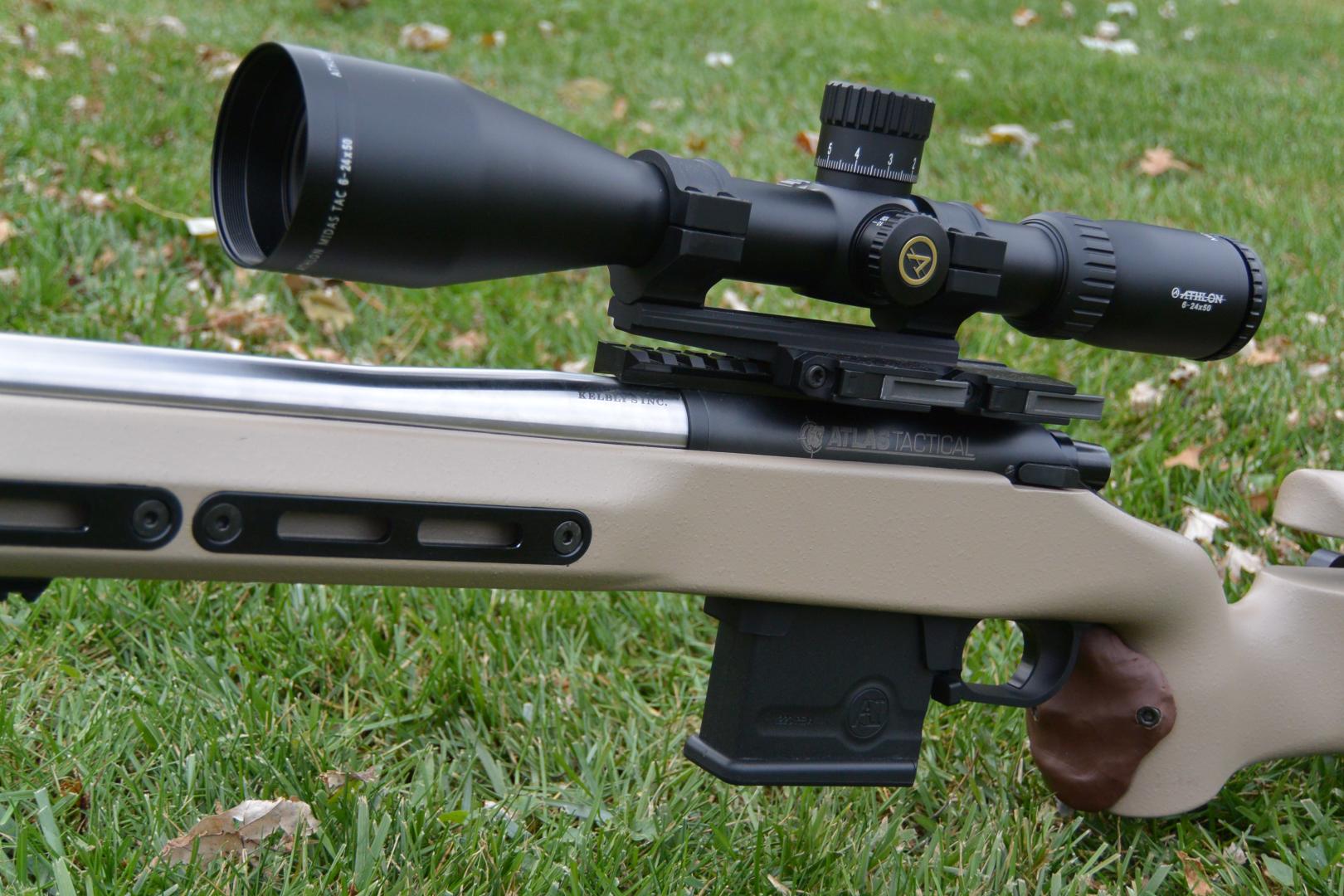
Athlon Midas TAC 6-24x50mm on Kelbly Atlas Tactical 
Les (Jim) Fischer BigJimFish Written: Sept 9, 2018 Table of Contents: - Background - Unboxing and Physical Description - Reticle - Comparative Optical Evaluation - Mechanical Testing and Turret Discussion: - Summary and Conclusion - Testing Methodology: Adjustments, Reticle Size, Reticle Cant - Testing Methodology: Comparative Optical Evaluation Background: In reviewing both the Athlon Ares BTR 4.5-27x50mm and this Athlon Midas TAC 6-24x50mm this year, I have an unusual situation. Both scopes are from the same brand and, at $849 and $629 street, respectively, I would consider them to be in the same price bracket. This suggests that there will be a lot of overlap in the potential buyers of each scope and begs a great deal of direct comparison as well as an unavoidable degree of re-use of text when discussing things in common such as the background of the company, the near identical manuals, or the very similar adjustment design. My apologies for the overlap, such as the rest of this background section. Athlon is one of the newest players in the sport optics industry and it turned some heads a few years ago as it seemed to be born, fully formed, with a complete line of scopes at a wide variety of price points. This is because, in some respects, the apple doesn't fall far from the tree, or runner, depending on your metaphor (I know, stretching it). Athlon was founded by (and is still run by) some Bushnell alums. As such, Athlon had the experience and contacts of a major market player at its start. Its business model also essentially differs little from that of its parent. They are both importers and brands - not manufacturers. As with most importers, they offer a broad selection of product lines and price points sourced from a variety of OEMs. Where Athlon departs from many of the importers, or at least from its parent, is that it is smaller, more nimble, and flatter in terms of corporate organization. The principal players of Athlon are on the floor at tradeshows talking to customers, industry players, and grumpy writers. This is not really a large or small company thing so much as a philosophic thing. Huge companies, like Kahr or Benchmade for instance, can, and do, have founders on the floor. Much smaller and more bureaucratic companies often do not. This shows in the timeliness of the features Athlon puts in scopes: they have their ear to the ground. My take is that the plan is basically to win on three things: cost, service, and up-to-date feature sets. So far they appear to be mostly delivering on these points. Athlon scopes are generally less costly than other brands coming from the same OEM, they seem to be building a solid reputation for customer service, and their features are up to date with market trends. Unboxing and Physical Description: Unboxing the Athlon Midas TAC 6-24x50mm reveals the exact same sparse accessories found with the big brother Ares scope: no caps or covers, just a lens cloth, battery, manual, and invitation for the customer to review the product online. I think I'll do that. 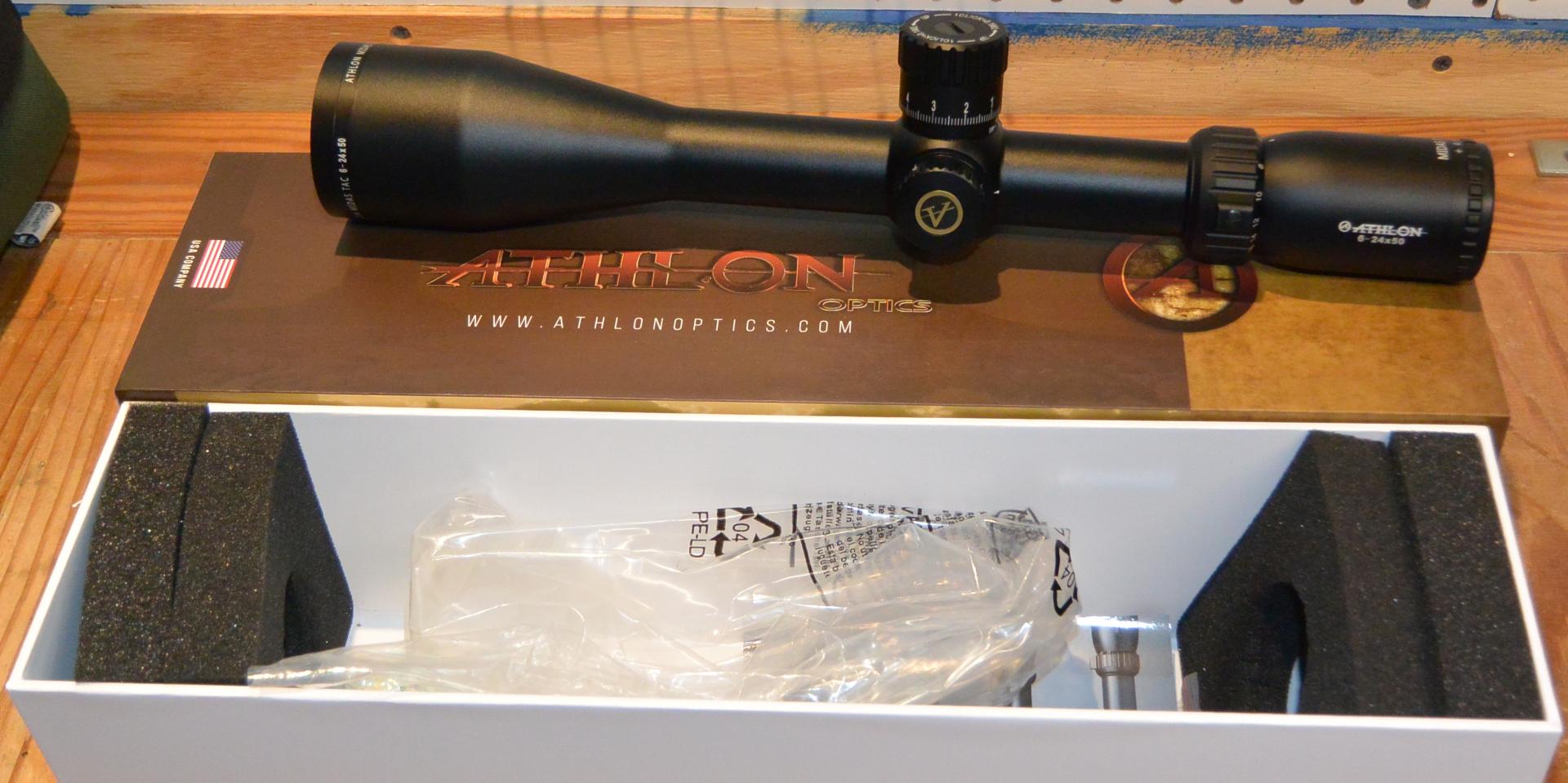
Athlon Midas TAC 6-24x50mm unboxing The scope itself is on the smaller side for this magnification range. It features a mid size 50mm objective and is a little longer than the Ares at 14.6", but slightly lighter at 26.3oz. I am a fan of smaller objective, lighter weight optics. I have the general opinion that traditional objective sizes have never adjusted to the incredible light transmission gains that current generation lens coatings have made possible and this has left many scope makers manufacturing huge, heavy, scopes that gain little additional low light capabilities for all that added weight. The Midas features a large uncapped 10 mil per turn zero stop elevation adjustment. The design and appearance of the adjustment is nearly identical to that of the Ares though the Midas knob does not include the extra O-ring that the Ares has. The resulting feel is similar to the Ares with the ring removed though the Midas is a bit stiffer. Specifically, it has a little higher ratio of click force / rotation force between clicks. This makes it a little harder to rotate just one click at a time without going over. I would not characterize it as too difficult a scope in this regard, but you are going to occasionally over-rotate with it. I have a slight overall feel preference for the Ares elevation adjustment. I would characterize the Midas as having an average elevation click stiffness with the Ares on the squishier side. Both have a feel I would characterize as fine but neither excellent. These differences between two scopes’ adjustment feel on exceptionally similar elevation knobs serves to highlight just how touchy a thing the adjustment of feel on the clicks of a scope can be. In a departure from the Ares, the Midas has a smaller capped windage knob. This knob is a 10 mils per turn knob that is marked 1-5 in each direction. It has good feel and is a nice compromise between a hunting design and a tactical design. That is to say, you could really use it either way and be pleased. The power ring and euro style diopter on the Midas are on the looser side of average with a parallax knob I would classify as perfect. Looking at the features of the Midas TAC elevation knob specifically, it is 10 mil per turn and features both a zero stop system that is a little different from what I have seen before and markings that can be repositioned. Repositioning the markings is done in a common way. They are located on an outer sleeve that pops off and can be repositioned after removal of a screw. This sleeve is toothed with enough teeth that its markings will properly line up with the actual detents instead of landing between as some others have done. The zero stop system is one that the Midas TAC shares with the Ares BTR but I have not seen on other optics - I am embarrassed to admit that I did not even notice that these scopes had one until halfway through the Ares review. As is common, the whole elevation knob on the Midas screws up and down as the adjustment it rotated. This attribute forms the basis of both the zero stop and the simple scribed turn indicator. The zero stop consists of a brass disc they refer to as the "zero stop locking plate" located under the removable outer adjustment sleeve. This disc can be repositioned using three set screws. So, basically, you zero the scope, remove the outer sleeve, loosen the set screws, and move the disc so that it is lying flat on the saddle with its stop protrusion immediately to the right of the stop protrusion on the scope saddle. You then gently tighten the set screws and replace the sleeve and its screw with the proper alignment of the zero. This zero stop is very inexpensive to make in addition to being quite functional. It also has the same advantage as most plunger style systems in that you can set it independently of the markings to give you a few tenths of adjustment below the zero if you want. It is a well designed system and I'm a fan. 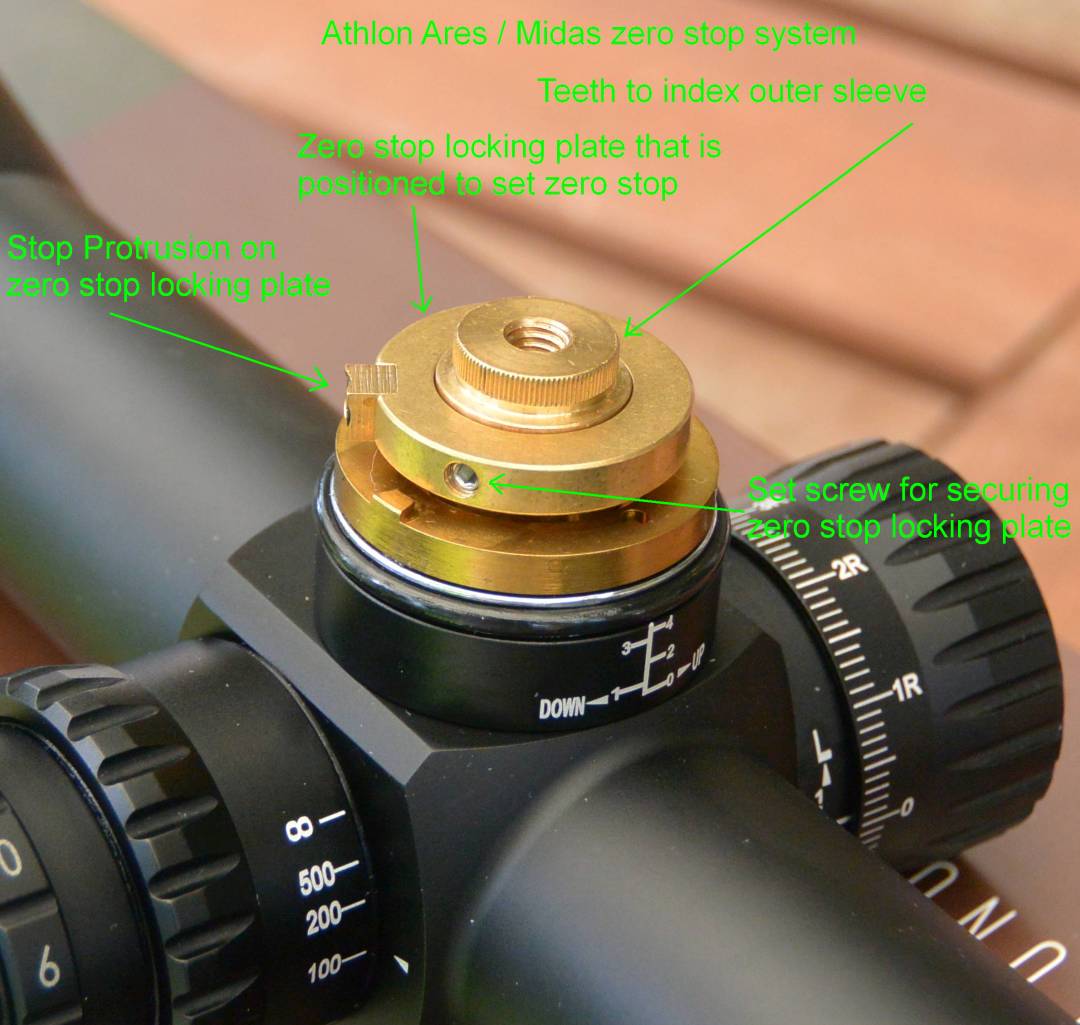
The Mil-stop system used on the Athlon Ares BTR and Midas TAC scopes The manual included with the Midas scope is the same mixed bag as the Ares and varies little in its text. It includes pretty good sections on focusing, setting eye relief, bore sighting, zeroing (although it mistakenly refers to the "zero stop locking plate" as black when it is actually brass) and a lesser section on mounting. It also has nice dimensioned diagrams of the reticle. There is some lack of clarity in the manual regarding if Athlon's MOA based scopes are calibrated to true MOA (TMOA) which is 1.047" @ 100 yds or shooters’ MOA / inches per hundred yards (SMOA / IPHY) which is 1.0" @ 100 yds. This is very important as 4.7% error is a lot of error when making long distance calculations. Upon speaking with the guys at Athlon, I found that their adjustments and reticles are calibrated in TMOA. The manual section on troubleshooting tips for accuracy is the most problematic section as it has some poor enough advice in it that I felt the need to write a whole paragraph about the manual. The section advises the shooter to "use a bench rest or sandbag to support the barrel and stock". Force on the barrel deflects the barrel, causing shots to stray and should be avoided - not encouraged - when seeking to shoot with accuracy. Support of the barrel with sandbags is actually often the cause of inaccuracy and not a solution for it. The manual also says to make sure there is "no excessive grease inside of the barrel". This suggests to me that there might be a good reason to have a proper amount of grease in the barrel and a novice shooter might then, in error, apply grease to such. Though grease is sometimes used in a barrel for long term storage, there should never be any grease in a barrel when you are shooting. Grease in a barrel can not only cause inaccuracies, but can also cause dangerous and/or unbalanced pressures in a barrel. Grease does not protect a barrel from wear either, as wear is overwhelmingly a product of erosion in the throat of a barrel from powder burning there and not a product of friction with the bullet over the length of the barrel. Reticle: The Athlon Midas TAC 6-24x50mm is available in two mil reticle options, the APRS2 and APRS3, as well as one MOA option, the APLR4. The two mil options are very similar to one another with the APRS3 being comprised of the APRS2 plus a Christmas tree section graduated in one mil increments vertically and .2 mil increments horizontally. The APRS2 is a typical mil hash reticle featuring a floating dot center and .2 mil increments horizontally out to 6 mils then .5 mil increments after that out to 9 mils, at which point there is just a thick crosshairs. Vertically, the reticle is graduated in .2 mil increments for just one mil. At that point, the top half is graduated in .5 mil increments out to 9 mils and then it becomes a thick crosshairs, while the bottom half is graduated in .5 mil increments out to 7 mils where it goes back to .2 mil increments until 10 mils, at which point it becomes a thick crosshairs. While there is probably some rationale for the alternating use of a .2 mil graduation system and a .5 mil one, that is not fully explained anywhere and I likely wouldn't agree with it over the consistency of sticking with the .2 mil increments throughout, though it probably doesn't matter a whole heck of a lot anyway. For what it’s worth, I think .2 mil graduations are a pretty good choice on a scope of this power range. Both vertical and horizontal crosshairs are numbered every 2 mils and are on the thinner than average side when it comes to line thickness. Generally, I think users will find both the APRS2 and APRS 3 reticles good choices with the user’s preference regarding a Christmas tree section the dividing factor on choice. When tested, the reticle showed a very slight cant of ~.5 degrees counter-clockwise relative to the adjustments. This is not an amount of deviation I would be concerned about. 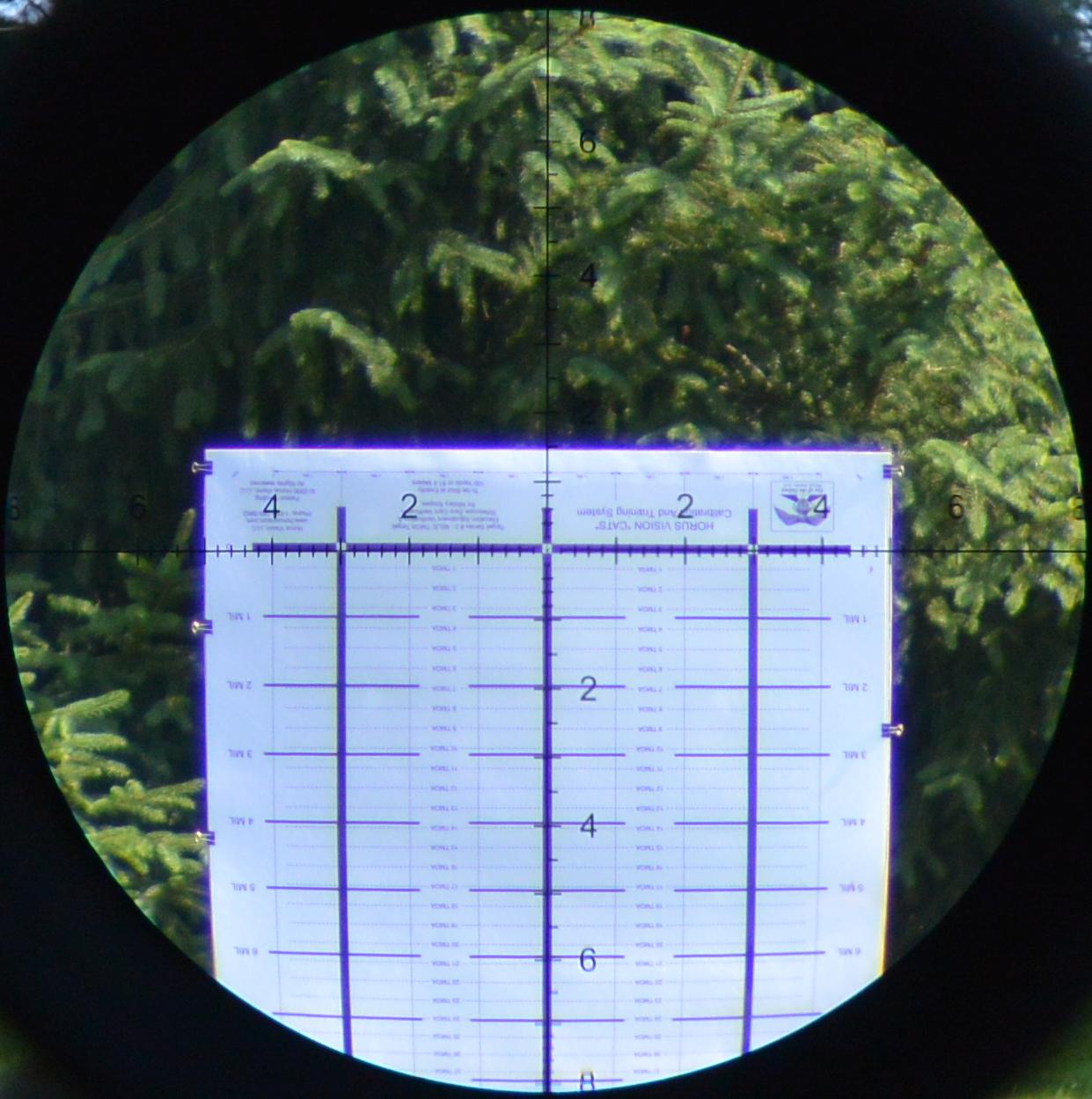
Horus CATS 280F test target through Athlon Midas TAC 6-24x50mm scope with APRS2 FFP MIL reticle. Comparative Optical Evaluation: For optical comparisons to this Athlon Midas TAC 6-24x50mm, I had the other scopes in this series of sub $1K FFP mil/mil precision rifle scope review, the Athlon Ares BTR 4.5-27x50 FFP IR Mil and Sightron SIIISS624x50LRFFP/MH, as well as two that have been used as comparisons by me in previous reviews for context, the Leupold Mk 6 3-18x44 and my old (and now discontinued) Zeiss conquest 4.5-14x44. All of these scopes were lined up together on a five slot adjustable v-block and evaluated using the procedure outlined in the methodology section at the end of this review. This same methodology is used on all long range scope evaluations and has been for several years now. I have never before had a set of five scopes with such generally close optical performance. Usually, scopes somewhat sort themselves into performance tiers with higher tier scopes being better than lower tier scopes in pretty much all characteristics. That was not even remotely the case with this lineup. No scope was always first or last when evaluating particular performance parameters and the order of the scopes’ rankings changed with pretty much every particular parameter being evaluated. That being said, the Midas was, on balance, on the lower side of average for the group and was bested by its Athlon Ares stablemate in almost all respects. The best aspects of optical performance for the Midas were its larger than group average field of view and better than average contrast. Its weakest points were eyebox, chromatic aberration, and pincushion / barrel distortion. None of these performance aspects were what I would consider problematic, but they were areas where it lagged behind the comparison scopes and, most importantly, its sibling. The Midas scope performed closer to middle of the pack in resolution, stray light handling, and depth of field. Edge to edge clarity was excellent on all the scopes tested and no scope displayed any tunneling. It is worth noting here that the Midas is the least expensive scope in this lineup by a significant margin. In that respect, bully to the Midas for keeping up and even beating the average in a few aspects. That is not how I feel about it overall though. Being a 6-24x scope, the Midas is much simpler to do well than its 4.5-27x Ares sibling. At the same design and build quality, the Midas would look much better than the Ares because 6x erector ratios are much, much harder to do well than 4x ones. That is not the case however. The Ares is optically better is almost all respects. It has a truly excellent performance at the price the Ares puts out and merely adequate performance at the price the Midas provides. It's hard to feel really good about the Midas optical performance next to the Ares. 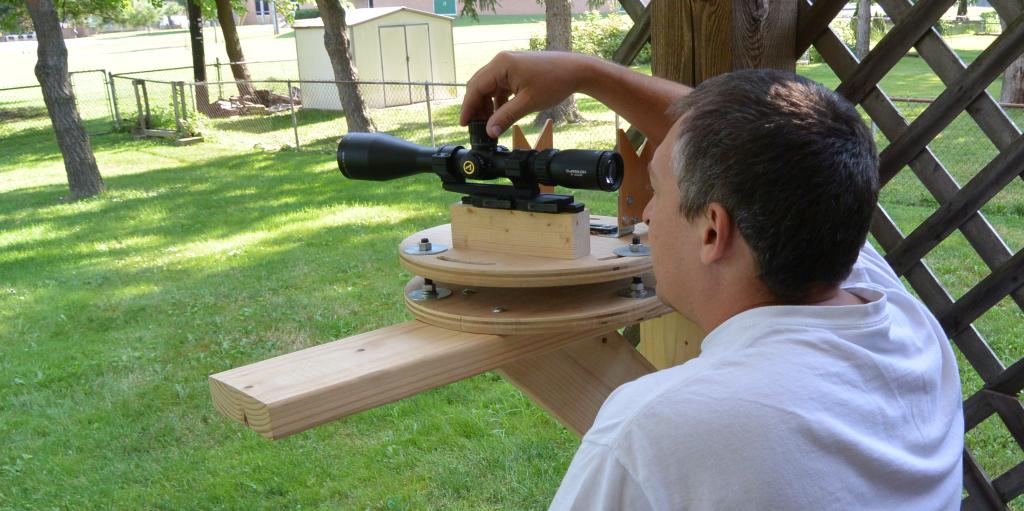
Doing the mechanical testing on the Athlon Midas TAC 6-24x50mm Mechanical Testing and Turret Discussion: As mentioned in the unboxing section, the Athlon Midas TAC 6-24x50mm sports a very feature rich 10 mil per turn zero stop elevation knob where the zero stop and zero are set independently, allowing you to set whatever amount of turn below the zero before the stop that you desire. The windage knob is also 10 mils per turn, though with a lower profile and capped construction. It also lacks a stop and is marked out to 5 mil left and right instead of continuously. Testing the accuracy of these adjustments was done in accordance with the methodology section detailed at the end of this review. This methodology was followed on all the scopes this year and has been in use for a few years now. In testing, the adjustments tracked monotonously perfectly in all respects. The scope adjusted up from optical center 14.3 mils with no deviation and then perfectly down 8.5 mils. This is not the full range of travel down but rather the travel with the zero stop flush to the center post. There is a little room internally for the zero stop to protrude above the post with no problems. I show a maximum of 12.4 mils down on my example in this configuration though I did not test the tracking out to that point. You could also remove the stop feature entirely and get even more travel. I show a max of 14.1 mils on my example. These numbers would suggest a 30 MOA base should not cause a problem and that some users might be able to do a 40 MOA and still have a 100yd zero though that will depend a lot on the rifle since there is variance in all rifles between the centerline of the rail and that of the bore. Tracking on both adjustments was repeatable and the scope returned to zero with no problems. The windage and elevation were also properly independent. No zero shift was affected by power change, parallax change, or diopter change. You don't get any better than zero deviation so a big win for that. Getting adjustments to exactly match the correct magnitude is one of the most difficult aspects of scope manufacture. As such, most scopes show deviation to some degree measurable with my equipment. The average deviation for precision rifle scopes, based on my past tests, is about 1%. 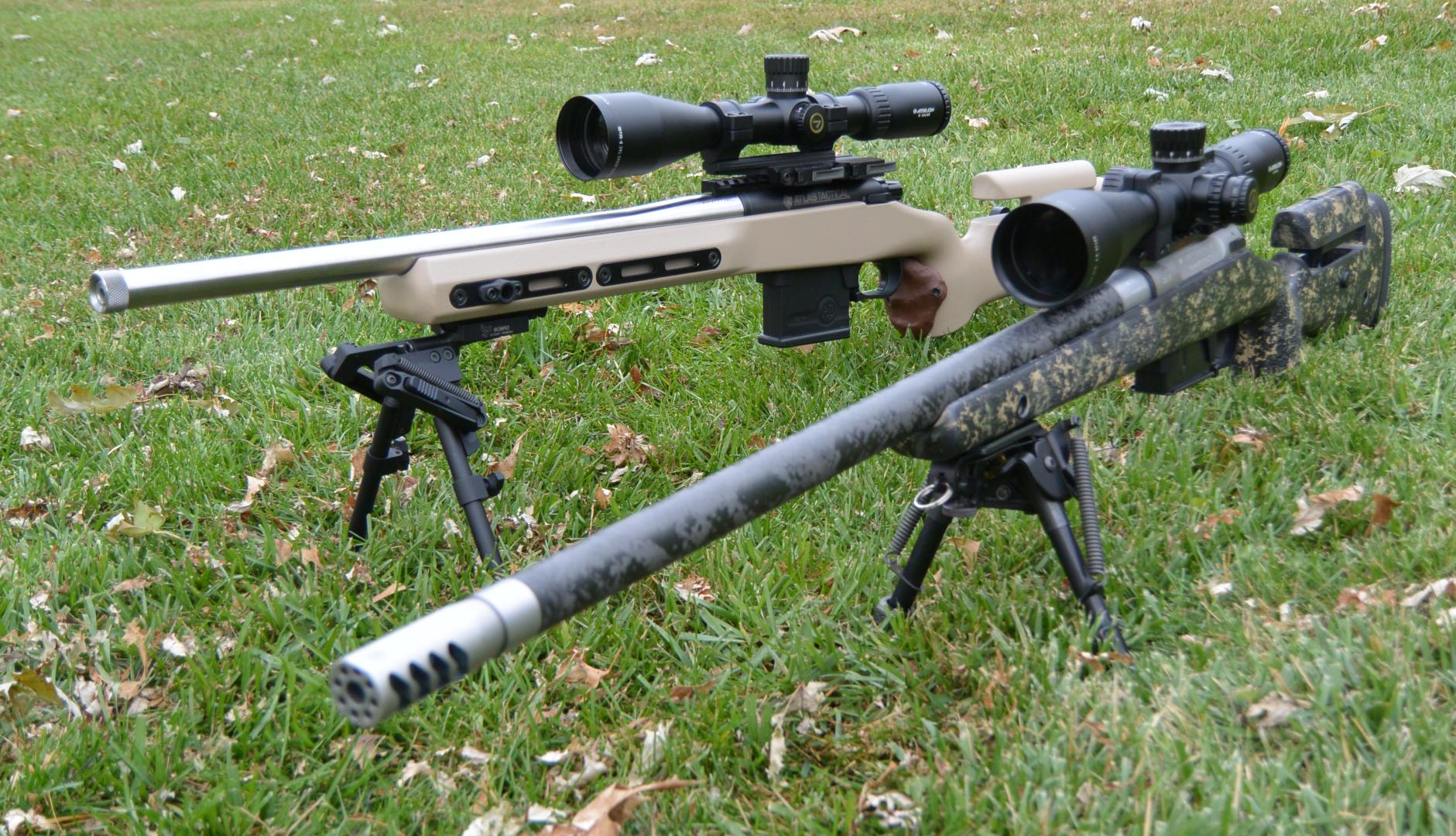
Athlon Ares BTR 4.5-27x50mm on Mesa Precison Arms Crux rifle (front) with Midas TAC 6-24x50mm on Kelbly Atlas tactical (rear) Summary and Conclusion: The Athlon Midas TAC 6-24x50mm is a lot of scope with a lot of features for the $630 street that it goes for. The thing is that its sister scope, the Athlon Ares BTR 4.5-27x50mm is a even more scope at its $850 price. This is emotionally hard for me. I understand intellectually that the 35% more that the Ares costs is a very meaningful difference and that the Midas might itself be a budget stretch that represents a new world of possibilities since you are talking about a scope with real long range capabilities in a price range otherwise full of set and forget limited range scopes. The Midas will mean that previously inaccessible game at 400yds is very doable. That could be quality meat for months for a family. It is hard, as an optics geek (even a not so well-heeled optics geek) to connect with that though. It is much easier for me to be really impressed that Athlon managed to get better optical performance out of the Ares while also cramming in a 6x magnification ratio and landing it at the very low price of $850. Sure, a 6x vs 4x magnification ratio might not really translate into much more utility for you, the added illumination on the Ares is no more utility to almost anybody, and the Ares is only a little optically better, but aren't you moved by how much more lit up some optics geek got about it? Here is Your Pro and Con Breakdown: Pros: Optics are significantly better than average at the price Tracked perfectly Very low price for a full featured FFP Mil/Mil zero stop scope Properly sized reticle with very little cant Very simple effective zero stop that lets you chose travel below zero Lightweight, 26.3oz Smaller 50mm objective I prefer Full 10 mil/turn knobs Good adjustment range, 25mil Reticle design in line with current trends Good warranty Cons: It's hard not to recommend its sister scope, the Ares BTR 4.5-27x50, over it for better optics, more features, and a much larger 6x magnification ratio Basically no extras like scope caps, sunshade, or bra Athlon is a new company with a good, though very short, track record Manual has some advice that may lead a novice astray 
Athlon Midas TAC 6-24x50mm in on a Mesa Precision Arms Crux Rifle Testing Methodology: Adjustments, Reticle Size, Reticle Cant When testing scope adjustments, I use the adjustable V-block on the right of the test rig to first center the erector. Approximately .2 or so mil of deviation is allowed from center in the erector as it is difficult to do better than this because the adjustable V-block has some play in it. The erector can be centered with the scope mounted or not mounted. If it started unmounted, I mount it after centering. I next set the zero stop (on scopes with such a feature) to this centered erector and attach the optic to the rail on the left side of the test rig. 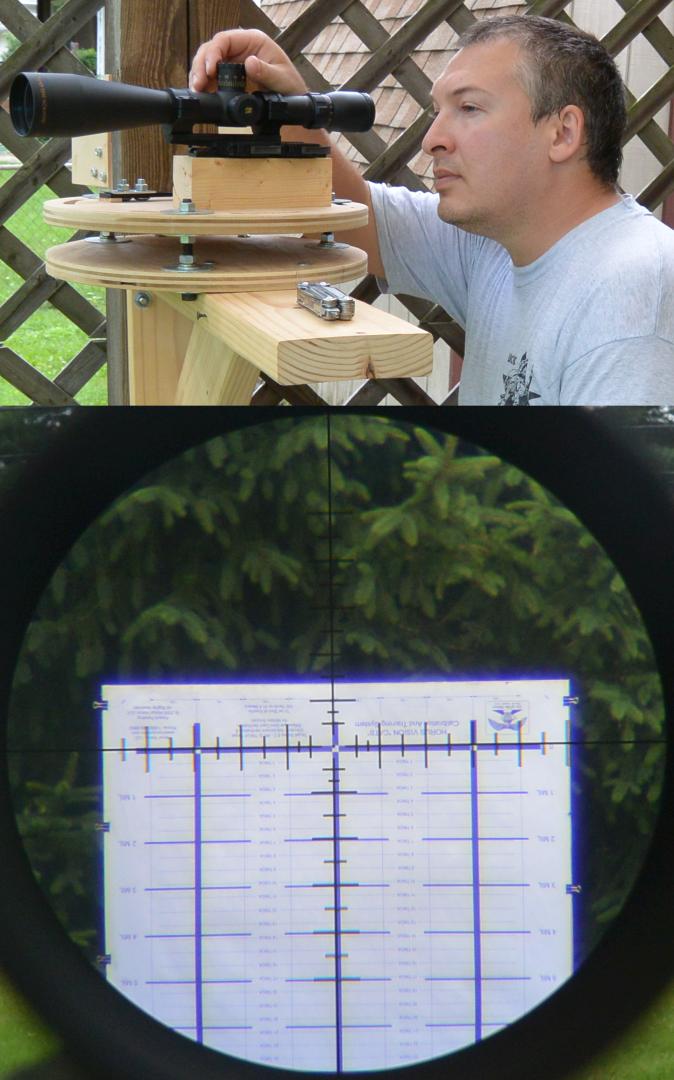
Mechanical testing apparatus and target The three fine threaded 7/16" bolts on the rig allow the scope to be aimed precisely at an 8'x3' Horus CATS 280F target 100 yds downrange as measured by a quality fiberglass tape measure. The target is also trued to vertical with a bubble level. The reticle is aimed such that its centerline is perfectly aligned with the centerline of the target and it is vertically centered on the 0 mil elevation line. The CATS target is graduated in both mils and true MOA and calibrated for 100 yards. The target is mounted upside-down on a target backer designed specifically for this purpose as the target was designed to be fired at rather than being used in conjunction with a stationary scope. (Since up for bullet impact means down for reticle movement on the target, the inversion is necessary.) With the three bolts tightened on the test rig head, the deflection of the rig is about .1 mil under the force required to move adjustments. The rig immediately returns to zero when the force is removed. It is a very solid, very precise test platform. These bolts allow the scope to be precisely positioned such that its reticle is perfectly aligned with the test target prior to moving the adjustments. Each click of movement in the scope adjustments moves the reticle on the target and this can observed by the tester as it actually happens during the test: it's quite a lot of fun if you are a bit of a nerd like I am! After properly setting the parallax to the target (head bob method) and diopter (after the parallax), I move the elevation adjustment though the range from erector center until it stops, making note every 5 mils of adjustment dialed of any deviation in the position of the reticle on the target relative to where it should be and also making note of the total travel and any excess travel in the elevation knob after the reticle stops moving but before the knob stops. At the extent of this travel I can also determine the cant of the reticle by measuring how far off of the target centerline the reticle has moved. I next reverse the adjustment process and go back down to zero. This is done several times to verify consistency with any notes taken of changes. After testing the elevation adjustments in this manner, the windage adjustments are tested out to 4 mils each way in similar fashion using the same target and basically the same method. The elevation and windage are then tested in conjunction with one another by making a large box 8 mil wide and as tall as the adjustments will allow. If the scope is one where it is easy to do so (not a pin type zero stop model), I next re-align the test rig to point the scope at the bottom of the target and test the elevation in the other direction for tracking and range. After concluding the testing of adjustments, I also test the reticle size calibration. This is done quite easily on this same target by comparing the reticle markings to those on the target. Testing a single scope of a given model from a given manufacturer, which is really all that is feasible, is not meant to be indicative of all scopes from that maker. Accuracy of adjustments, reticle size, and cant will differ from scope to scope. After testing a number of scopes, I have a few theories as to why. As designed on paper, I doubt that any decent scope has flaws resulting in inaccurate clicks in the center of the adjustment range. Similarly, I expect few scopes are designed with inaccurate reticle sizes (and I don't even know how you would go about designing a canted reticle as the reticle is etched on a round piece of glass and cant simply results from it being rotated incorrectly when positioned). However, ideal designs aside, during scope assembly the lenses are positioned by hand and will be off by this much or that much. This deviation in lens position from design spec can cause the reticle size or adjustment magnitude to be incorrect and, I believe, is the reason for these problems in most scopes. Every scope maker is going to have a maximum acceptable amount of deviation from spec that is acceptable to them and I very much doubt they would be willing to tell you what this number is, or better yet, what the standard of deviation is. The tighter the tolerance, the better from the standpoint of the buyer, but also the longer average time it will take to assemble a scope and, therefore, the higher the cost. Assembly time is a major cost in scope manufacture. It is actually the reason that those S&B 1-8x short dots took years to make it to market. Tolerances are a particular concern for scopes that have high magnification ratios and also for those that are short in length. Both of these design attributes tend to make assembly very touchy. This should make you, the buyer, particularly careful to test purchased scopes that have these desirable attributes, as manufacturers will face greater pressure on these types to allow looser standards. If you test your scope and find it lacking, I expect that you will not have too much difficulty in convincing a maker with a reputation for good customer service to remedy it: squeaky wheel gets the oil and all that. Remember that some deviations, say a scope’s adjustments being 1% too large or small, are easy to adjust for in ballistic software, whereas others, a large reticle cant for instance, are not. Before I leave adjustments, reticle size, and reticle cant, I will give you some general trends I have noticed so far. The average adjustment deviation seems to vary on many models with distance from optical center. This is a good endorsement for a 20 MOA base, as it will keep you closer to center for longer. The average deviation for a scope’s elevation seems to be about .1% at 10 mils. Reticle size deviation is sometimes found to vary with adjustments so that both the reticle and adjustments are off in the same way and with similar magnitude. This makes them agree with each other when it comes to follow up shots. I expect this is caused by the error in objective lens position affecting both the same. In scopes that have had a reticle with error, it has been of this variety, but fewer scopes have this issue than have adjustments that are off. Reticle size deviation does not appear to vary in magnitude as you move from erector center although adjustment deviation often does. The mean amount of reticle error is less than .05%. Reticle cant mean is about .05 degrees. Reticle cant, it should be noted, affects the shooter as a function of calculated drop and can easily get lost in the windage read. As an example, a 1 degree cant equates to about 21 cm at 1000 meters with a 168 gr .308 load that drops 12.1 mil at that distance. That is a lot of drop, and a windage misread of 1 mph is of substantially greater magnitude (more than 34 cm) than our example reticle cant-induced error. This type of calculation should be kept in mind when examining all mechanical and optical deviations in a given scope: a deviation is really only important if it is of a magnitude similar to the deviations expected to be introduced by they shooter, conditions, rifle, and ammunition. Lastly, the proliferation of "humbler" type testing units such as mine appears to have resulted in scope companies improving their QC standards. I see less deviation in products now then a few years ago. Testing Methodology: Comparative Optical Evaluation The goal of my optical performance evaluation is NOT to attempt to establish some sort of objective ranking system. There are a number of reasons for this. Firstly, it is notoriously difficult to measure optics in an objective and quantifiable way. Tools, such as MTF plots, have been devised for that purpose, primarily by the photography business. Use of such tools for measuring rifle scopes is complicated by the fact that scopes do not have any image recording function and therefore a camera must be used in conjunction with the scope. Those who have taken through-the-scope pictures will understand the image to image variance in quality and the ridiculousness of attempting to determine quality of the scope via images so obtained. Beyond the difficulty of applying objective and quantifiable tools from the photography industry to rifle scopes, additional difficulties are encountered in the duplication of repeatable and meaningful test conditions. Rifle scopes are designed to be used primarily outside, in natural lighting, and over substantial distances. Natural lighting conditions are not amenable to repeat performances. This is especially true if you live in central Ohio, as I do. Without repeatable conditions, analysis tools have no value, as the conditions are a primary factor in the performance of the optic. Lastly, the analysis of any data gathered, even if such meaningful data were gathered, would not be without additional difficulties. It is not immediately obvious which aspects of optical performance, such as resolution, color rendition, contrast, curvature of field, distortion, and chromatic aberration, should be considered of greater or lesser importance. For such analysis to have great value, not only would a ranking of optical aspects be in order, but a compelling and decisive formula would have to be devised to quantitatively weigh the relative merits of the different aspects. Suffice it to say, I have neither the desire nor the resources to embark on such a multi-million dollar project and, further, I expect it would be a failure anyway as, in the end no agreement will be reached on the relative weights of different factors in analysis. The goal of my optical performance evaluation is instead to help the reader get a sense of the personality of a particular optic. Much of the testing documents the particular impressions each optic makes on the tester. An example of this might be a scope with a particularly poor eyebox behind which the user notices he just can't seem to get to a point where the whole image is clear. Likewise, a scope might jump out to the tester as having a very bad chromatic aberration problem that makes it difficult to see things clearly as everything is fringed with odd colors. Often these personality quirks mean more to the users’ experience than any particular magnitude of resolution number would. My testing seeks to document the experience of using a particular scope in such a way that the reader will form an impression similar to that of the tester with regard to like or dislike and will be aware of the reasons for that impression. The central technique utilized for this testing is comparative observation. One of the test heads designed for my humbler apparatus consists of five V-blocks of which four are adjustable. This allows each of the four scopes on the adjustable blocks to be aimed such that they are collinear with the fifth. For the majority of the testing, each scope is then set to the same power (the highest power shared by all as a rule). Though power numbers are by no means accurately marked, an approximation will be obtained. Each scope will have the diopter individually adjusted by the tester, the adjustments centered optically, and the parallax set. A variety of targets, including both natural backdrops and optical test targets, will be observed through the plurality of optics with the parallax being adjusted for each optic at each target. A variety of lighting conditions over a variety of days will be utilized. Specific notes are made regarding: resolution, color rendition, contrast, field of view, edge to edge quality, light transmission, pincushion and barrel distortion, chromatic aberration, tunneling, depth of field, eyebox, stray light handling, and optical flare. The observations through all of these sessions will be combined in the way that the tester best believes conveys his opinion of the optic’s performance and explains the reasons why. 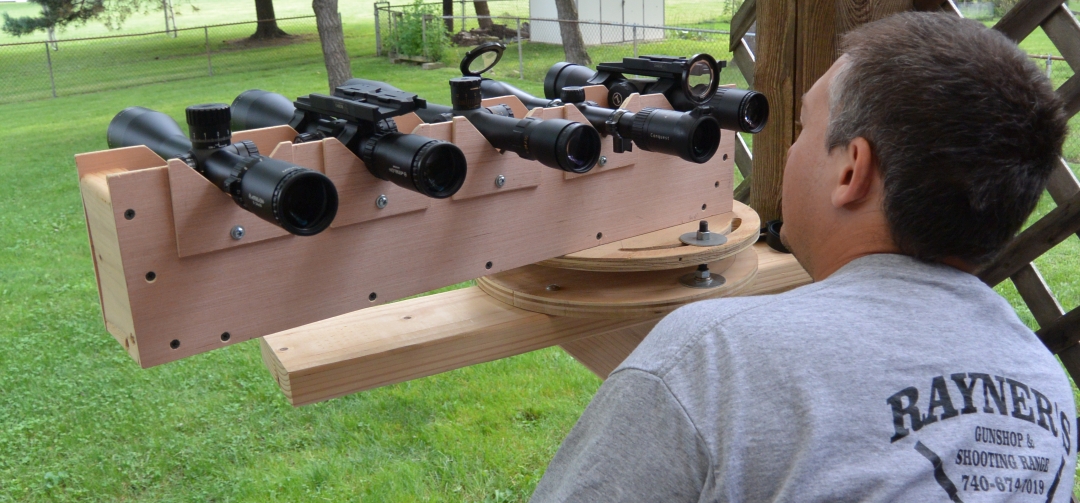
Comparative optical testing of this years sub $1k precision rifle scopes behind the adjustable v-block |
|
|
|
|
Good review. I have one of these (with the non Christmas tree reticle) coming in today to go on my new Bergara HMR 6.5. Seems like a great value and should hold me till I can budget for something better.
|
|
|
"Ya brung two too many"
|
|
Got to zero the gun with the Athlon. For what I paid (less than $600) I could not be more pleased. I would compare the glass with my Viper PST. It may even be clearer. Turrets tracked perfectly and feel great. I absolutely love the reticle and see no need for the Christmas tree. Super glad I got turned on to this scope.
|
|
|
"Ya brung two too many"
|
|
To any one looking for the Athlon Ares BTR 4.5-27x50 - APLR3 FFP IR MIL.
Camera land NY is having a sale on it next week 5/20-6/3 for $549.99 which is a steal! HERE NOT on sale until 5/20 |
|
|
|
|
I have had this model (non-christmas tree) for a little while and I've had no problem dialing or using the reticle to shoot steel between 400-1000 yards.
|
|
|
|
 Win a FREE Membership!
Win a FREE Membership!
Sign up for the ARFCOM weekly newsletter and be entered to win a free ARFCOM membership. One new winner* is announced every week!
You will receive an email every Friday morning featuring the latest chatter from the hottest topics, breaking news surrounding legislation, as well as exclusive deals only available to ARFCOM email subscribers.
AR15.COM is the world's largest firearm community and is a gathering place for firearm enthusiasts of all types.
From hunters and military members, to competition shooters and general firearm enthusiasts, we welcome anyone who values and respects the way of the firearm.
Subscribe to our monthly Newsletter to receive firearm news, product discounts from your favorite Industry Partners, and more.
Copyright © 1996-2024 AR15.COM LLC. All Rights Reserved.
Any use of this content without express written consent is prohibited.
AR15.Com reserves the right to overwrite or replace any affiliate, commercial, or monetizable links, posted by users, with our own.

